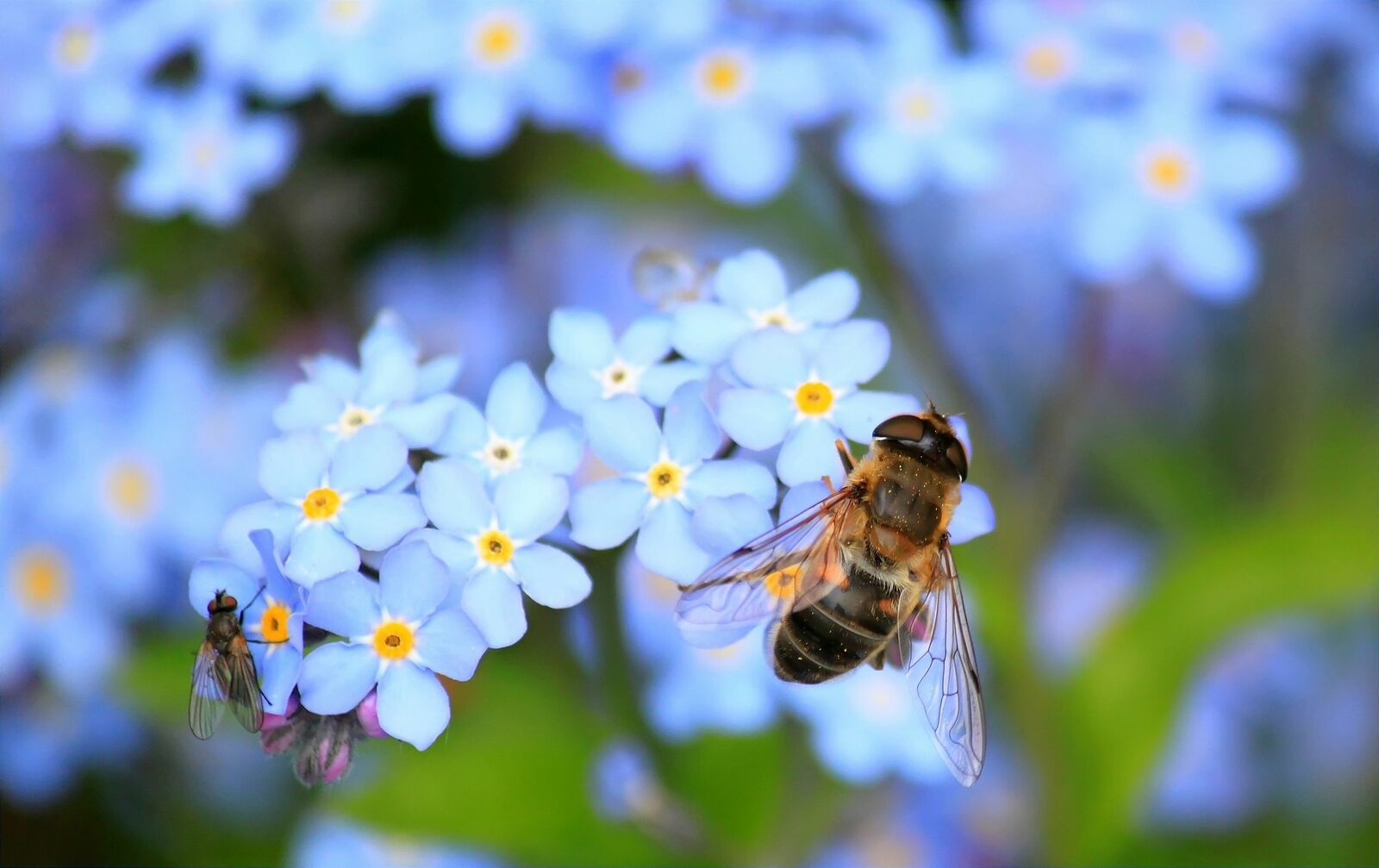
Bee-Friendly Plants: List With Flowers, Trees & Co.
In this article you will get an overview of bee-friendly plants for your garden. We explain which flowers, herbs, woody plants and wild plants have value for bees and provide them with food and habitat.
This Article Contains:
- Insect Pollination Explained
- Bees Are Important Pollinators in the Garden
- Flowers That Attract Bees: What Do Bees Eat?
- Plants That Attract Bees: List for Overview
- Pollinator Plants: Herbs & Flowers for Bees
- Table: Bee-Friendly Flower, Herbs, and Wild Plants for All Seasons
- Vegetable Plants for Insects & Bees
- Bee Friendly Shrubs for the Garden: Trees & Bushes
- Table: Bee Friendly Woody Plants for the Garden
- Your Bee-Friendly Garden: Planting Plans
- You Should Avoid These Woody Plants:
- Frequently Asked Questions About Bee Friendly Plants
Quick Overview
Bee-Friendly Plants: An Overview With Examples
- Flowers for bees: beard flower, borage, dahlia, corn poppy, daisy, marigold, sunflower, marigold,...
- Herbs for bees: basil, savory, fennel, coriander, lavender, oregano, rosemary, sage, hyssop,...
- Vegetable plants for pollinators: especially annual crops such as eggplant, beans, cucumbers, squash, melons, peppers, tomatoes, zucchini,...
- Bee-friendly trees: apple, sycamore, pear, rowan, rock pear, lime, plum, willow,...
- Shrubs for bees: blackberry, hazelnut, raspberry, currant, sloe, snowball, hawthorn,...
You Should Avoid These Plants:
- Refrain from using varieties of flowers with double blooms, such as certain varieties of peonies, dahlias, chrysanthemums, hydrangeas, and camellias
- forsythia
- ginkgo
- cherry laurel
- magnolias
- certain Rhododendron species
- thujas
- cypresses
Insect Pollination Explained
Pollination is the transfer of pollen to the stigma, i.e. from the male to the female reproductive organ of a flower. Pollination results in fertilization and the seeds or fruits can grow. Insects such as bees, bumblebees, butterflies, beetles and various flies play a very important role in the pollination of plants. In Germany, however, bees in particular are among the most important pollinators. Besides insect pollination, however, there are other ways for plants to fertilize their seeds. Some plants rely on the wind or water, and there are also plants that can pollinate themselves and do not need any external help at all (self-pollinators).
Bees Are Important Pollinators in the Garden
Bees have an important role in the garden because they are very powerful pollinators on which many plants depend. They are so efficient in their work that they cannot be replaced by other pollinating insects such as wasps or butterflies. Pollinating insects contribute to the fertilization of plants and thus to their reproduction - so without bees, the continued existence of many plant species would be at risk. Without pollination, most plants do not produce fruit and gardening efforts are in vain without the little helpers. Therefore, not only the preservation of biodiversity, but also our food security depends on pollinating insects.
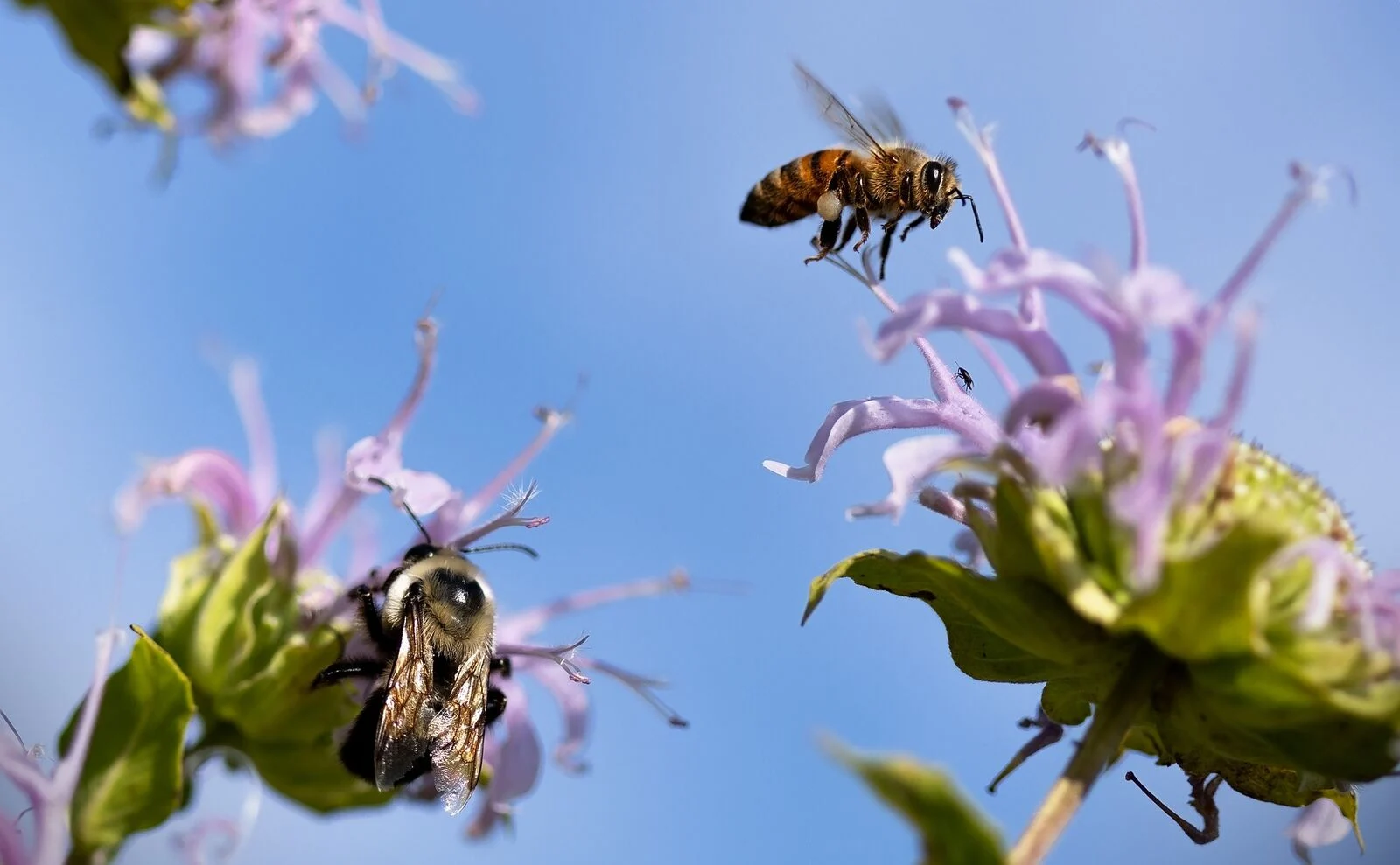
Bees Are Highly Endangered: How to Save the Bees?
However, as for many other insects, the situation of bees is not particularly rosy and there is a lack of food and habitat. Especially wild bees are for the most part on the red list. They are not protected by beekeepers and are left to their own devices, which often means their death sentence if there is a lack of food and nesting opportunities nearby. To provide just that to bees, you can make your garden bee-friendly and plant appropriate flowers, herbs and vegetable plants. In addition, it's helpful to know how wild bees nest in order to provide them with nesting opportunities. Like any living thing, insects also enjoy a supply of water, especially in dry, hot summers. If you already have a birdbath, you can line it with stones that stick out of the water. The insects can then land on them and drink.
Flowers That Attract Bees: What Do Bees Eat?
Bees mainly eat nectar and pollen, which they collect from flowers. Nectar provides a lot of sugar and thus energy, while pollen is very rich in protein and is mainly fed to the larvae. If flowers are scarce and the bees cannot collect enough food, beekeepers often provide them with sugar water.
The various bee species in Germany differ to some extent in their feeding habits: Some species, such as honey bees and many wild bee species are so-called generalists. This means that they are not specialized on certain plant species and find food on many different plants. Other species are specialists and fly only to certain plant species, making them particularly effective at pollinating those species. In addition, there are also bee species such as cuckoo bees or bumblebees, which lay their eggs in the nests of other conspecifics so that they can feed on their food.

Want to Plan a Bee-Friendly Garden?
With our digital bed planner, you can easily plan a diverse mixed crop. Companion plants are displayed directly and you get tips on succession planting and crop rotation!
Plan a Bed NowPlants That Attract Bees: List for Overview
Bees are attracted to the bright colors of flowers, so it's important to have a wide variety of flowering plants in your garden. But not all flowers are created equal, and not every plant has ecological value for your garden. Especially some new cultivars often provide less or no food for pollinators. Therefore you should inform yourself in advance which plants are suitable. It's best to choose mostly native plants and go for species richness of early and late bloomers in your garden, so that something blooms in your garden all year round. It is important to plant not only flowers, herbs and vegetables, but also shrubs and trees. In addition, it is helpful to leave wildflowers and herbs standing. Wildflowers, in fact, also provide food and, in some cases, nesting sites for wild bees, which nest in hollow stems! A list of examples of bee-friendly plants can be found below.
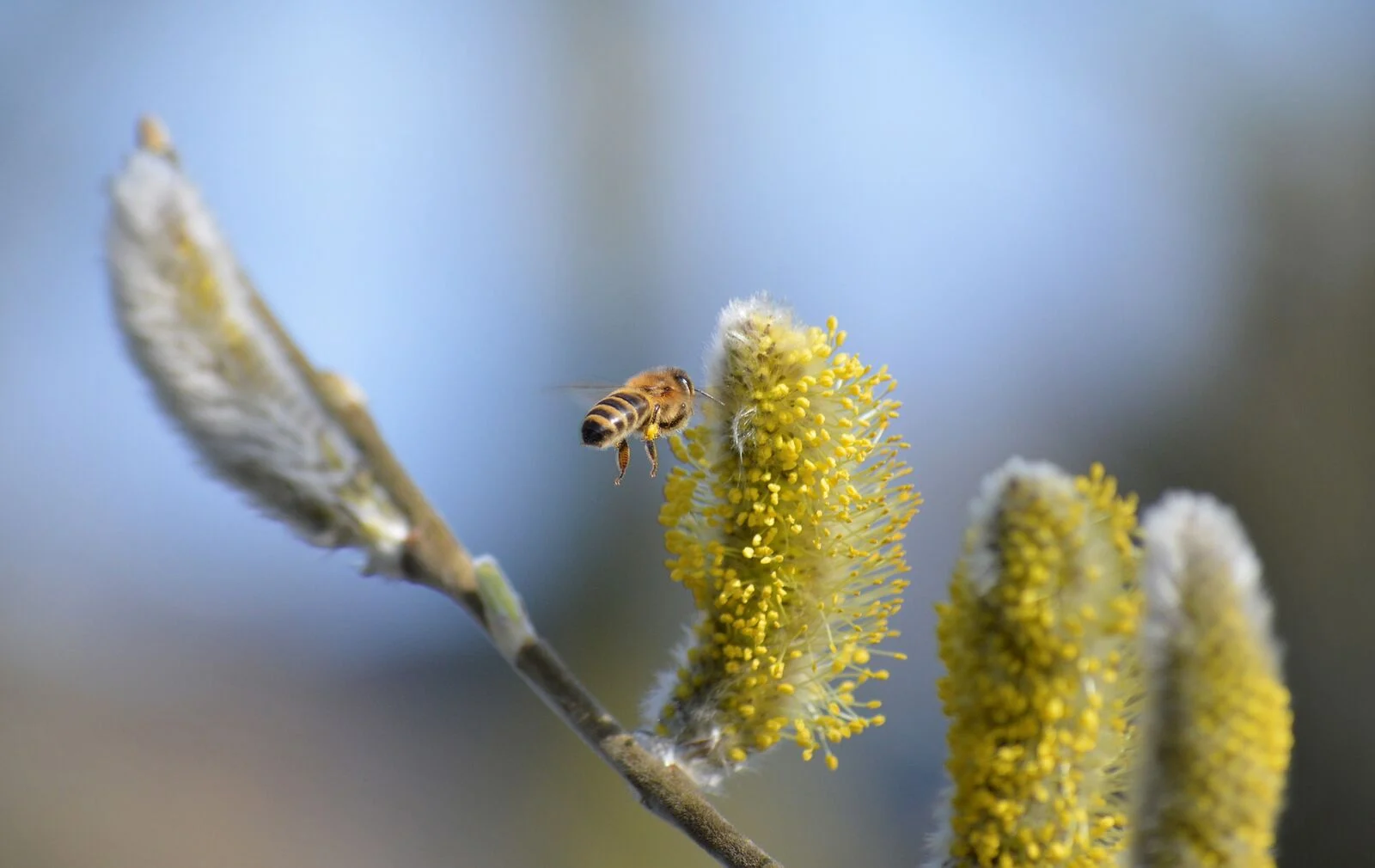
Pollinator Plants: Herbs & Flowers for Bees
As already mentioned, you should provide a wide range of flowering plants. There are numerous flowers such as poppies, sunflowers or marigolds that are valuable for bees. In addition to native flowers and herbs, you can also plant Mediterranean herbs such as basil, lavender or sage, which also bloom again every year. The important thing to remember when choosing non-native plants is that they are not invasive and will crowd out other, native plants. In addition to cultivated plants, however, wildflowers and herbs are also of great value to insects in your garden, as they provide additional food and habitat without you, the gardener, having to do much to provide it.
Table: Bee-Friendly Flower, Herbs, and Wild Plants for All Seasons
Below we give you a few examples of plants with their bloom times that you can put in a bee-friendly garden. This list is of course not complete, but should give you ideas and inspiration.
| Flowers | Flowering Time | Herbs | Flowering Time | Wild flowers & Wild herbs | Flowering Time |
|---|---|---|---|---|---|
| Beard flower | August to September | Fennel | July to August | Widow flower | May to August |
| Borage | May to September | Nasturtium | July to October | Columbine | May to September |
| Dahlia (star dahlia) | July to October | Catmint | May to August | Aster | August to November |
| Verbena | July to October | Coriander | June to August | Comfrey | May to August |
| Marigold | June to September | Lavender | July to September | Speedwell | April to September |
| Corn poppy | May to July | Mint | July to September | Common Daisy | March to October |
| Cornflower | June to July | Oregano | July to September | Bellflower | June to August |
| Margarithe | June to August | Rosemary | May to June | Kidney vetch | May to September |
| Garden cosmos | July to September | Sage | June to July | St John's Wort | June to September |
| Sunflower | July to September | Thyme | May to October | Creeping groundsel | May to June |
| Hollyhock | July to September | Hyssop | July to August | Lily | June to September |
| Stundent flower | June to August | Lemon balm | June to August | Man litter | July to August |
Refrain From Flowers With Double Flowers
Flowers with double flowers are plants that have been modified by breeding and have only petals for aesthetic reasons. In most cases, the pollen-producing stamens are missing altogether or are difficult for insects to reach, which is why no food can be found in these flowers. However, their bright colors still attract hungry pollinators, leading them on a false trail.
Many modern rose varieties, peonies, dahlias, chrysanthemums, hydrangeas or camellias have double flowers. However, there are always exceptions, such as the old wild varieties, which in turn have 'normal' flowers and are more interesting for insects. Hibiscus is also a flower that is of no value to many bee species, as the flowers often do not match their anatomy. They simply can't reach the nectar.
You don't have to completely give up these plants, but you should be aware of what their ecological value is. Still, they attract insects and you can combine them with other plants that provide nectar. As always, having as much diversity as possible is key to supporting insects in your garden.
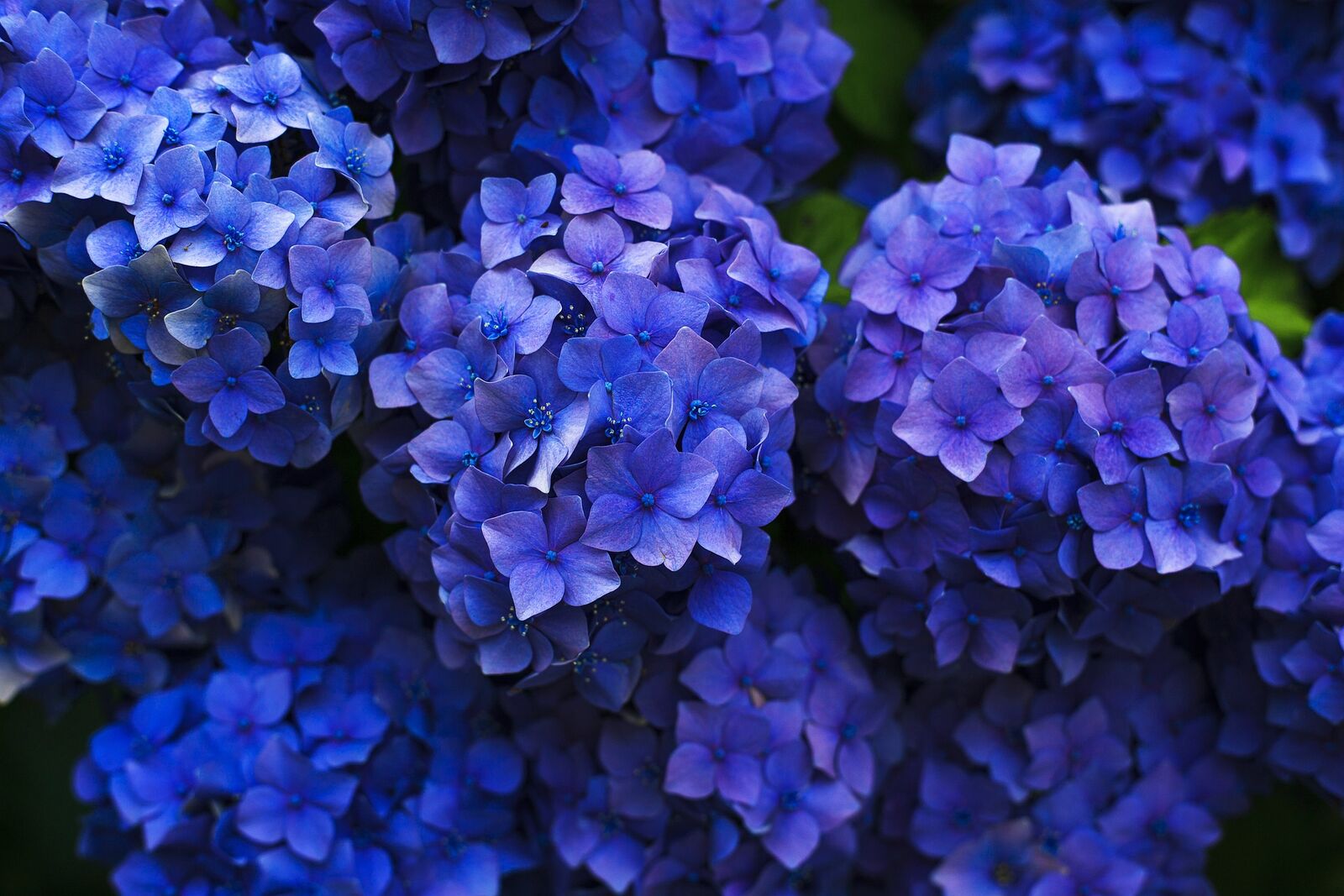
Vegetable Plants for Insects & Bees
Not only flowers and herbs are flowering plants, because vegetable plants also bloom. It depends on whether the plant is annual or perennial. Annual vegetable plants bloom directly in the same year and then form their fruits. These include, for example, zucchini, melons, pumpkins, cucumbers, eggplants, tomatoes, peppers and beans. These crops produce beautiful colorful flowers directly in the first year. In addition, some of these crops also rely on insect pollination, because without it, cross-pollinators like beans and cucumbers wouldn't produce fruit to harvest in the first place. So if you grow your own vegetables, not only will the bees benefit from bee-friendly planting, but you as the gardener: with a richer harvest as well. Other plants, such as root vegetables or chard, are biennials and don't flower until their second year. You can allow some of the biennial crops to flower in your beds and then obtain your own seeds. Carrots in particular, or umbellifers in general, are very attractive to some specialized bee species.
Bee Friendly Shrubs for the Garden: Trees & Bushes
Shrubs and trees also play an important role for insects and other small animals in the garden. Their thickets provide shelter and habitat for birds, snails, beetles and other insects. For bees in particular, tree cavities or dead wood are a good place to nest. Since wild bees also depend on having a nesting opportunity close to the food supply, trees in your yard are especially important! After all, wild bees don't fly that far from their nest, quite the opposite of the honey bee, which can fly up to 6 km/3.7 mi away from its hive. In addition, woody plants bloom every year, which makes them attractive plants for bees and other pollinators.
Table: Bee Friendly Woody Plants for the Garden
| Trees | Flowering Time | Shrubs | Flowering Time |
|---|---|---|---|
| Apple tree | April to May | Blackberry | June to August |
| Sycamore | April to May | Hazelnut | January to April |
| Pear tree | April to May | Raspberry | May to August, depending on the variety |
| Mountain ash | May to June | Currant | April to May |
| Sweet chestnut | June to July | Firethorn | May to June |
| Rock pear | April to May | Sloe | April |
| Cornelian cherry | March to April | Snowball | May to June |
| Lime | July | Gooseberry | April to May |
| Plum | April to May | Hawthorn | May to June |
| Horse chestnut | May | Wild grape | July to September |
| Willow | March to May | Winter heath | March to April |
Your Bee-Friendly Garden: Planting Plans
Here you can find some examples for a bee-friendly garden or bed like a herb spiral or a vegetable bed with flowers and herbs.
You Should Avoid These Woody Plants:
In contrast, there are unfortunately also woody plants that are planted in many gardens as hedges or trees, without much value for the native fauna. Some of these shrubs are even poisonous or invasive and cause more damage. Which shrubs these are for example, I enumerate you in the following. Of course, this list is not exhaustive, but encourages you to research the shrubs you would like to plant. In addition to the plants listed below, cypresses, thujas, ginkgo and magnolias are also rather critical in terms of their bee-friendliness.
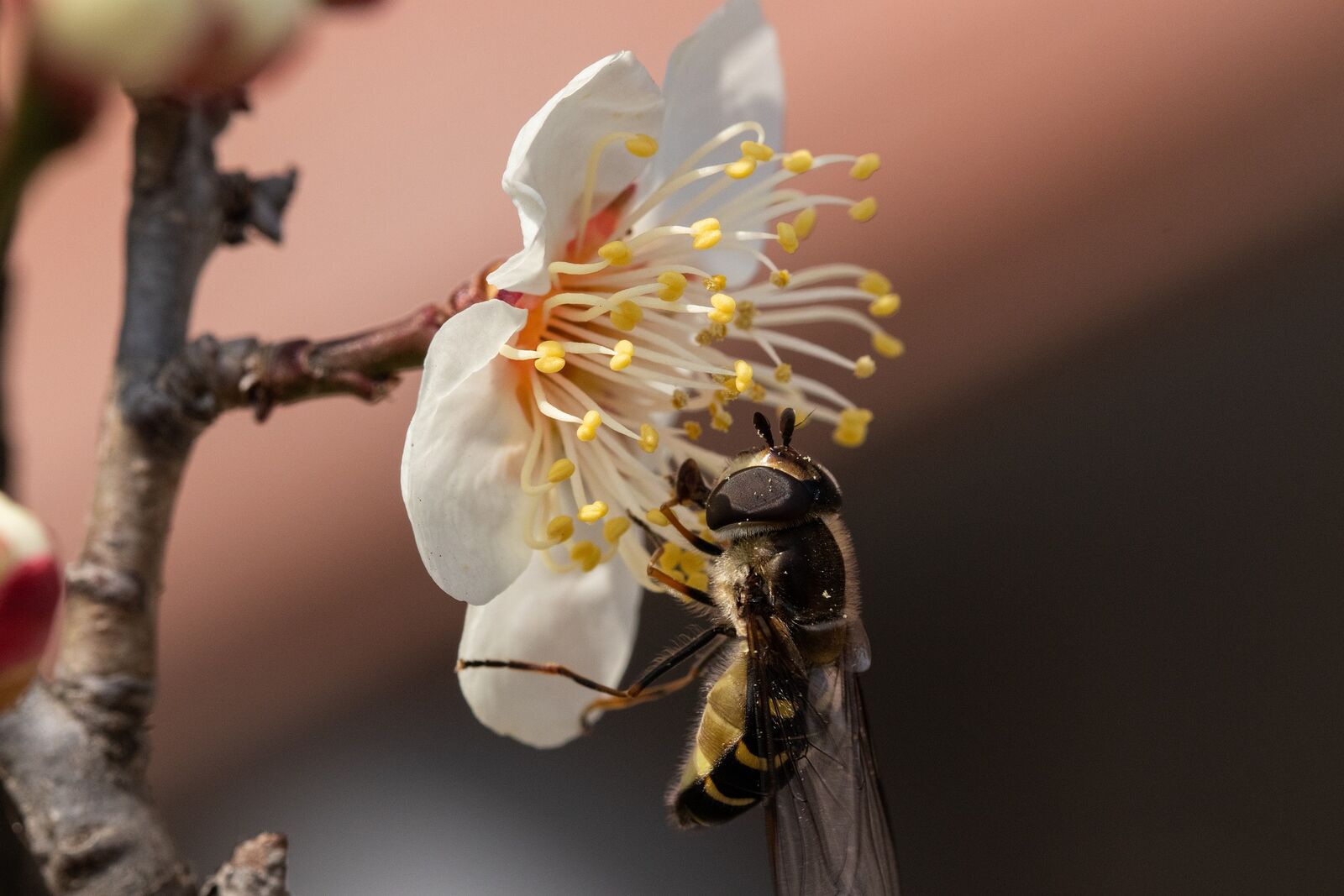
Rhododendron
There is a great variety of species of rhododendrons, as they occur worldwide. Therefore, even some species have no ecological value in our latitudes. However, native wild species are suitable for a natural garden, as they can also be valuable for bees and other insects. Rhododendrons, in fact, bloom quite early in the year and attract many insects by their flowering splendor. Among the native species of Germany are, for example, Rhododendron ferrugineum, Rhododendron hirsitum and Rhododendron tomentosum.
However, most rhododendron species are considered toxic to humans and animals, so you should always wear gloves when pruning or planting the shrub. However, this does not apply to pollinators, but it may be that toxins end up in the honey this way. This honey is called pontic honey, which can cause symptoms of poisoning in humans.
Forsythia
Forsythia are usually the first indicators that nature is awakening in spring. They attract insects with their bright yellow flowers, but then disappointingly find that there is nothing to be had. Most forsythia do not provide nectar or pollen and produce only so-called dry flowers. Nevertheless, forsythia do not harm insects because they are not poisonous. However, there is a certain variety of forsythia that actually also provides pollen and can be successfully flown by bees. This variety is called 'Beatrix Farrand' and is probably quite low maintenance and undemanding. So if you want forsythia in your garden, it's best to choose this variety!
Cherry Laurel
Cherry laurel, while very popular, should not necessarily be planted as a hedge if you care about insects and nature. For one thing, it is often planted alone as a dense evergreen hedge. Here any diversity is missing. For another, these plants secrete their sweet sugar sap through the leaves, which attracts insects and may give the appearance of being insect friendly. This is the reason that cherry laurel attracts insects even without flowers, but does not provide them with food. However, many native animals still give this plant a wide berth because it is a neophyte and does not come from here. In addition, cherry laurel is poisonous and birds in particular, which like to seek shelter in hedges, therefore keep their distance. Tips for Designing a Bird-Friendly Garden can be found here in the article. A major ecological problem is also when the leaf clippings are 'disposed of' in the woods, as this allows the invasive plant to spread further and displace native species. If you want to plant the poisonous cherry laurel, please do not dispose of the cuttings in nature!
As you can see, it's not quite as black and white as it may seem when you first start researching on the Internet. The most important thing is simply to ensure the greatest possible variety of plants , because then the insects have a choice and can decide which plant they want to fly over. Nevertheless, it is best to do without these controversial plants and plant hawthorn and co. instead. Because not only the insects and birds have an advantage from these hedges, but some of them are also edible for us humans!
For questions and comments, feel free to write us at [email protected]. Want to get helpful gardening tips throughout the year and plan your own beds for the best? Then register here or download the Fryd app for Android or iOS.
Fryd - Your digital bed planner
Cover image by Anja on Pixabay.
Source: BMEL (2022) ,Bienenfreundliche Pflanzen' at https://www.bmel.de/SharedDocs/Downloads/DE/Broschueren/BienenfreundlichePflanzen.pdf?__blob=publicationFile&v=27

Marie
Marie is an agronomist. She is particularly interested in the sustainable and organic cultivation of vegetables and other plants. In her own garden, she gained experience and likes to try things out to learn from nature. She is particularly interested in the values and principles of permaculture, in order to contribute not only to the well-being of nature, but also to the well-being of people and future generations.
Learn MoreCurrent Topics in the Community
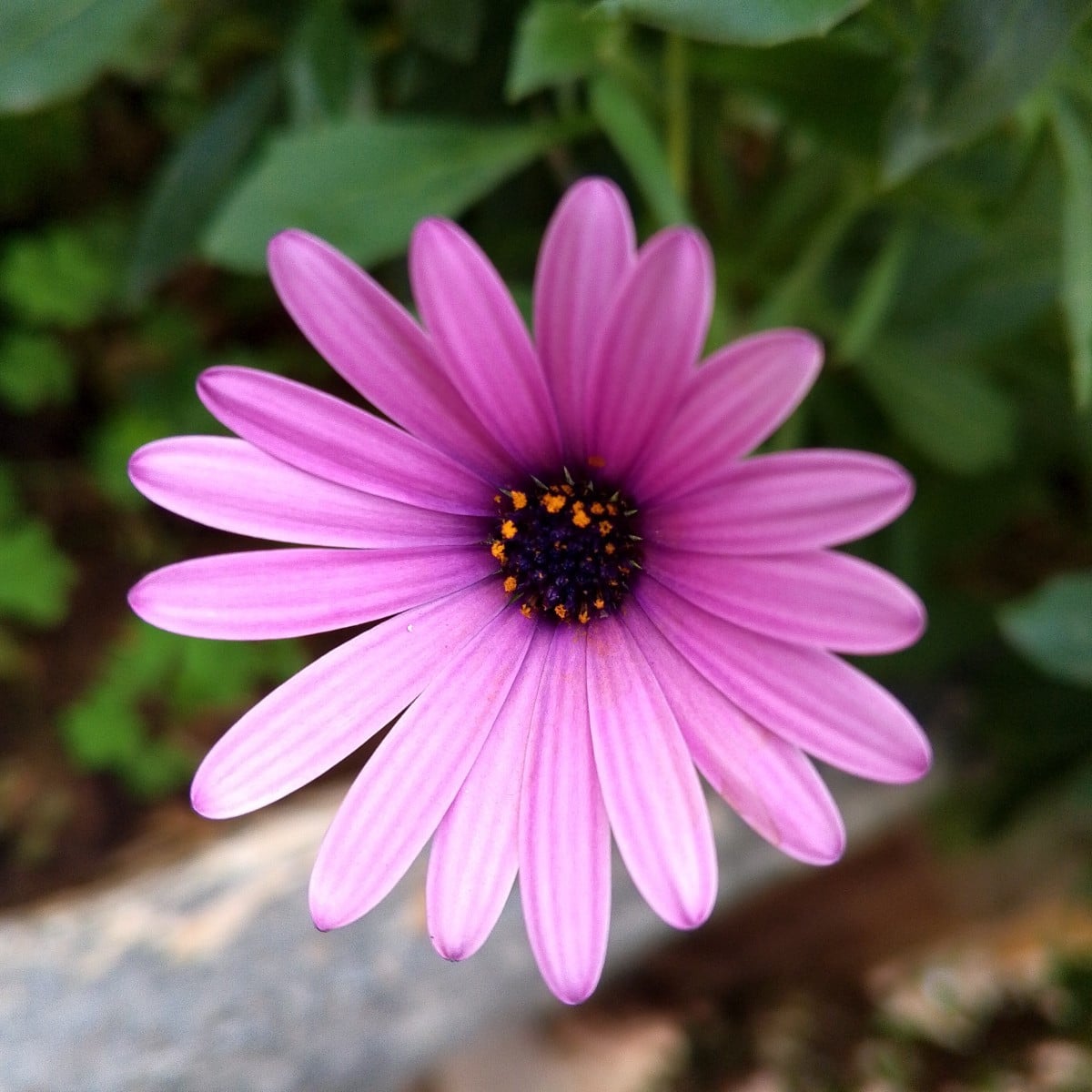
I found this in the street 🌼🌺 i dont know its name
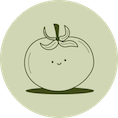
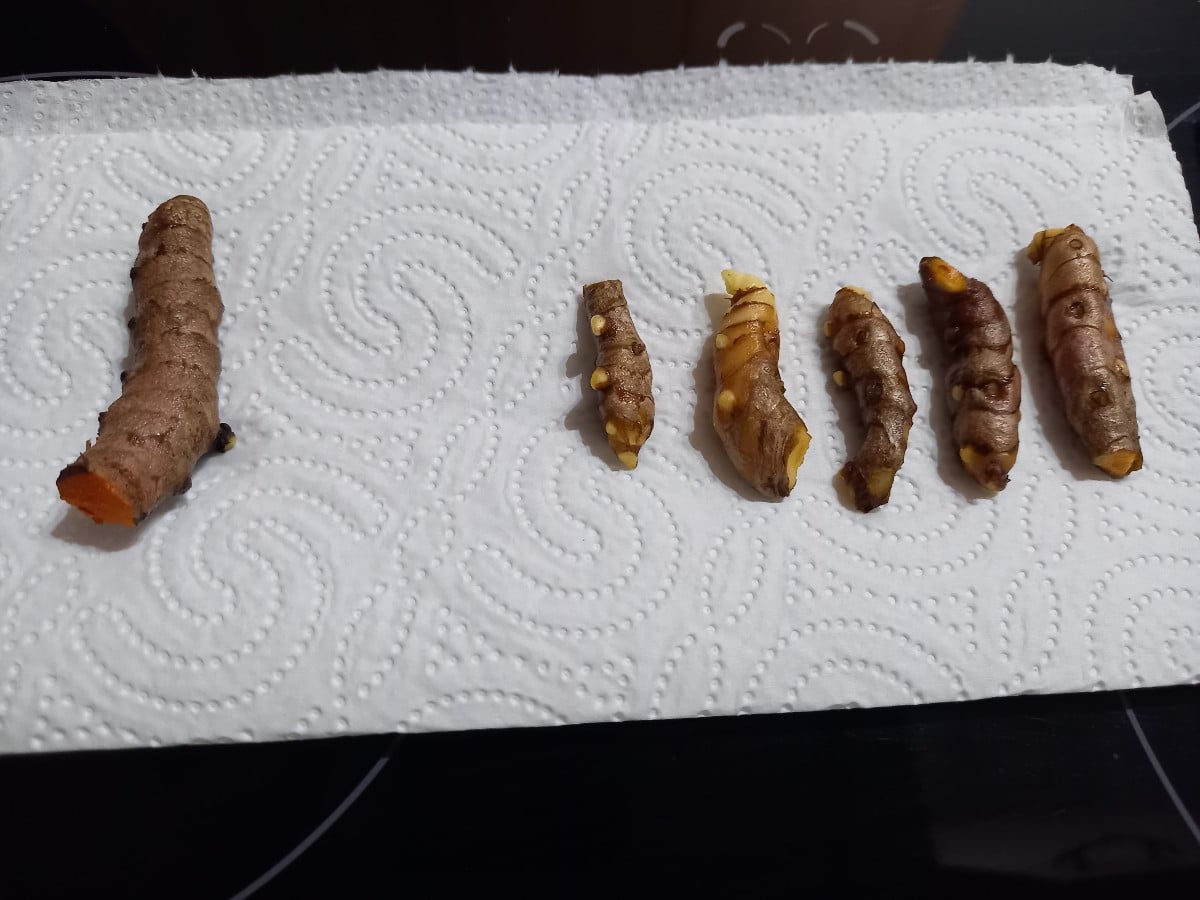
Liked 4 times
Hello folks, Today, after almost a year, I took my turmeric plant out of the flower pot that was on our windowsill. I think it's not bad for a 14x14 pot without any special care. On the left is the mother rhizome, which is also edible.
Show 2 answers
Liked 13 times
Pumpkin jam Cinnamon sticks are added for flavor. It tastes great, do you make pumpkin jam in Europe?
Show 8 answersPopular Articles

Overwintering Parsley: How to Do It Successfully

How to Grow Lettuce in Winter: Varieties, Sowing, Harvesting

Growing Sage Plant: Tips for Sowing and Harvesting

What Herbs Can Be Planted Together?

Create & Design a Permaculture Garden

Overwintering Plants: Tubs, Pots and Raised Beds

Pruning, Fertilizing & Propagating Currants: Care Tips

Pruning Raspberries: How to Do It

Vegetable Garden With Greenhouse: How to Use Greenhouse Effect

Winterizing Beds and the Garden: How to Do It
FAQ
There are some flowers that provide food for bees, such as bearded flowers, borage, star dahlia, verbena, cornflower, marigolds, sunflowers, hollyhocks or marigolds.
Which woody plants are bee-friendly?
Native woody plants have a particularly great value for bees. Plant best berries, hazelnut, firethorn, snowball, linden, willow or fruit trees such as plum, pear and apple.
What plants do not provide food for bees?
Some plants do not provide pollen or nectar for bees. These include flowers with double blossoms such as peonies, dahlias or chrysanthemums. You should also avoid cherry laurel, gingko, magnolia, forsythia and cypress.
Bees feed on nectar and pollen, which they collect from flowers. Nectar is very rich in sugar, while pollen provides protein.